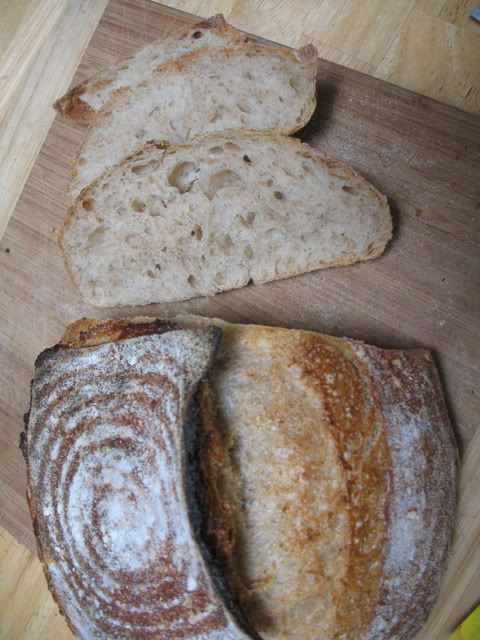I've been experimenting lately with sweet baking and haven't done much bread unless we needed it. My daughter's birthday is coming up and I'm trying to find a chocolate cake recipe and another flavor that will appease the non-chocolate folks. I've also been trying out cookies by the gross. I didn't know how much it would limit my bread baking time. Add to that the fact that I've had a cold for most of this week and it pretty much means that I haven't wanted to bake anything at all. Add to *that* the fact that I still don't have a decent digital camera and taking all the photos with film and then developing them later on in the week once I have a full roll is a little frustrating when you want to share things right away. But this thing is so tasty that I wanted to share. Had to.
I love butter. Butter makes almost anything better. I'm finding out that it makes bread especially tasty. I wanted a recipe today that gave me the taste of butter in the bread as well as on the outside of it.

This is what I call my Buttery White Bread. It's moist on the inside without being too dense. It's strong enough to hold up to tomato slices. The crust is soft without being overly so. It's soft enough to go well with about any sandwich filling. It's about the perfect sandwich bread for us.
Only took me a month of trying to come up with the right recipe. :p
You Will Need:
3.5 cups of unbleached bread flour (I used Gold Medal as I'm trying to get rid of it)
2.5 teaspoons yeast
2/3 cup milk
1/2 cup water
1/4 cup butter
salt to your taste
Directions:
In your bowl, combine the flour and yeast. I used active dry that I knew was good. Make a well and add your milk, water, and butter. Comebine to form a shaggy mass. Knead until a coherent ball of dough; about 7 minutes. Rest for 20-25 minutes. Stretch your dough a little bit and sprinkle on your salt. Depending on your butter being salted or not, adjust to your taste. Knead the salt in for about 7 minutes. Rise twice. Shape into loaf and put in greased loaf pan. Bake in a 400 degree oven until a thermometer reads 200 degrees. Cool. Cut. Eat.
This is the first loaf that I'm really proud of. Now it's time to work more on artisan breads. :)



 Bagel Booth
Bagel Booth 











